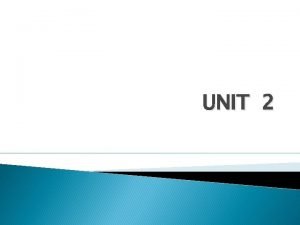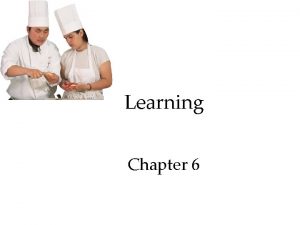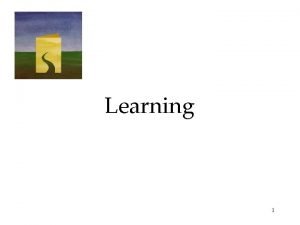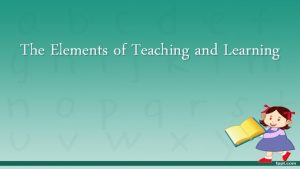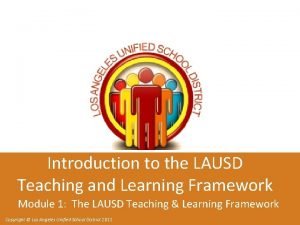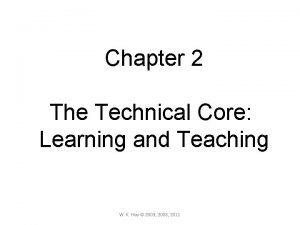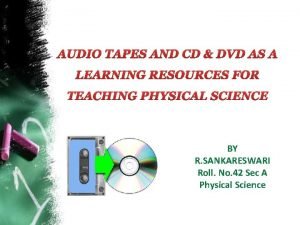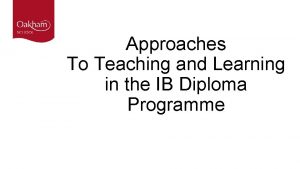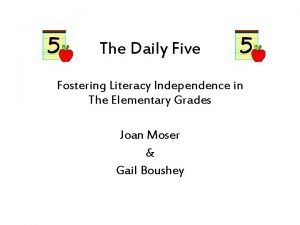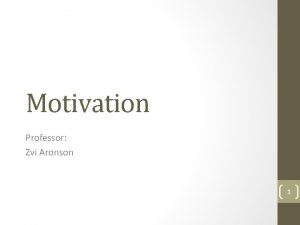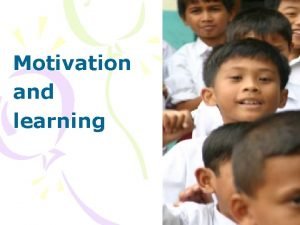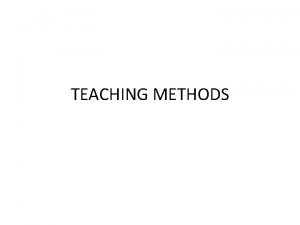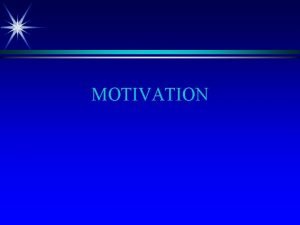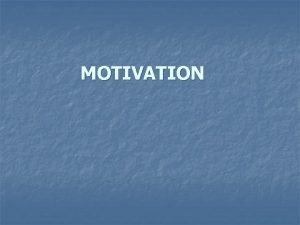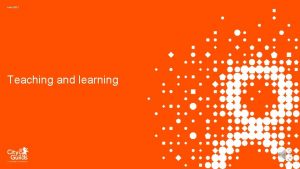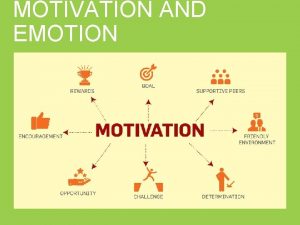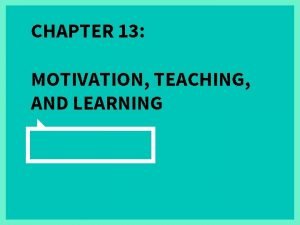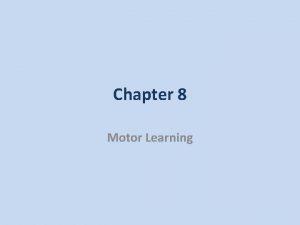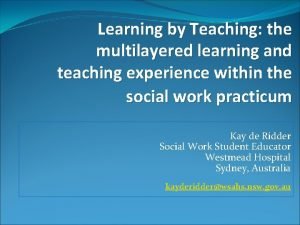Motivation in Learning and Teaching Motivation Motivation defined

















- Slides: 17

Motivation in Learning and Teaching

Motivation • Motivation defined: – Internal state – Arouses, directs, maintains behavior • Intrinsic/Extrinsic • Locus of causality

Four General Approaches to Motivation • • Behavioral Humanistic Cognitive Sociocultural

Behavioral Approach • Rewards are consequences of behaviors • Incentives encourage or discourage behaviors

Humanistic Approaches • Encourage peoples’ inner resources – Self-actualization – Self-determination – Self-esteem, etc. • Maslow’s hierarchy of needs

Maslow’s Hierarchy Motivation increases as needs are met Self. Actualization Need Being (growth) Needs Aesthetic Needs Need to know and Understand Motivation decreases as needs are met Esteem Needs Belongingness and Love Needs Safety Needs Physiological Needs Deficiency Needs

Cognitive Perspective • Focus on thinking Plans, goals, schemas, expectations & attributions • Emphasize intrinsic motivation

Weiner’s Attribution Theory • Locus Internal/external • Stability Stable/unstable • Controllability Controllable/ uncontrollable

Expectancy X Value Theories • Individual’s expectation of reaching goal • Value of that goal to individual • Eccles has added cost to equation

Sociocultural Conceptions of Motivation • Emphasizes participation in communities of practice • Legitimate peripheral participation • Relate to authentic tasks

Why Goals Improve Performance • • Direct attention to the task at hand Mobilize effort Increase persistence Promote development of new strategies

Four Kinds of Goals • • Mastery goals Performance goals Work-avoidance goals Social goals

Interest and Emotions • Student interests linked with success in school • Ensure that “interesting details” are legitimately tied to learning

Arousal: Excitement and Anxiety in Learning • • Arousal Curiosity Anxiety and effects on achievement Coping with anxiety

Schemas: Beliefs about Ability • • Entity view Incremental view Developmental differences Effects on types of goals

Beliefs about Self. Efficacy • Personal competence in particular situation • Sources of self-efficacy – Mastery experiences – Vicarious experiences – Social persuasion • Efficacy and motivation

Beliefs about Self • Self-determination • Learned helplessness • Self-worth – Mastery-oriented – Failure-avoiding – Failure-accepting
 It is a collection of well defined object
It is a collection of well defined object Microteaching definition
Microteaching definition Evolutionary theory of motivation
Evolutionary theory of motivation Cuadro comparativo e-learning b-learning m-learning
Cuadro comparativo e-learning b-learning m-learning Concept of learning ppt
Concept of learning ppt Learning is defined as
Learning is defined as Learning stimulus
Learning stimulus What are the elements of teaching and learning?
What are the elements of teaching and learning? New jersey center for teaching and learning
New jersey center for teaching and learning New jersey center for teaching and learning
New jersey center for teaching and learning Guiding principles of mtb-mle
Guiding principles of mtb-mle Teaching learning framework lausd
Teaching learning framework lausd Assessment the bridge between teaching and learning
Assessment the bridge between teaching and learning Technical core: teaching and learning
Technical core: teaching and learning Advantages and disadvantages of tape recorder in education
Advantages and disadvantages of tape recorder in education Approach to learning ib
Approach to learning ib Www.njctl.org answer key
Www.njctl.org answer key 10 steps to independence daily 5
10 steps to independence daily 5




